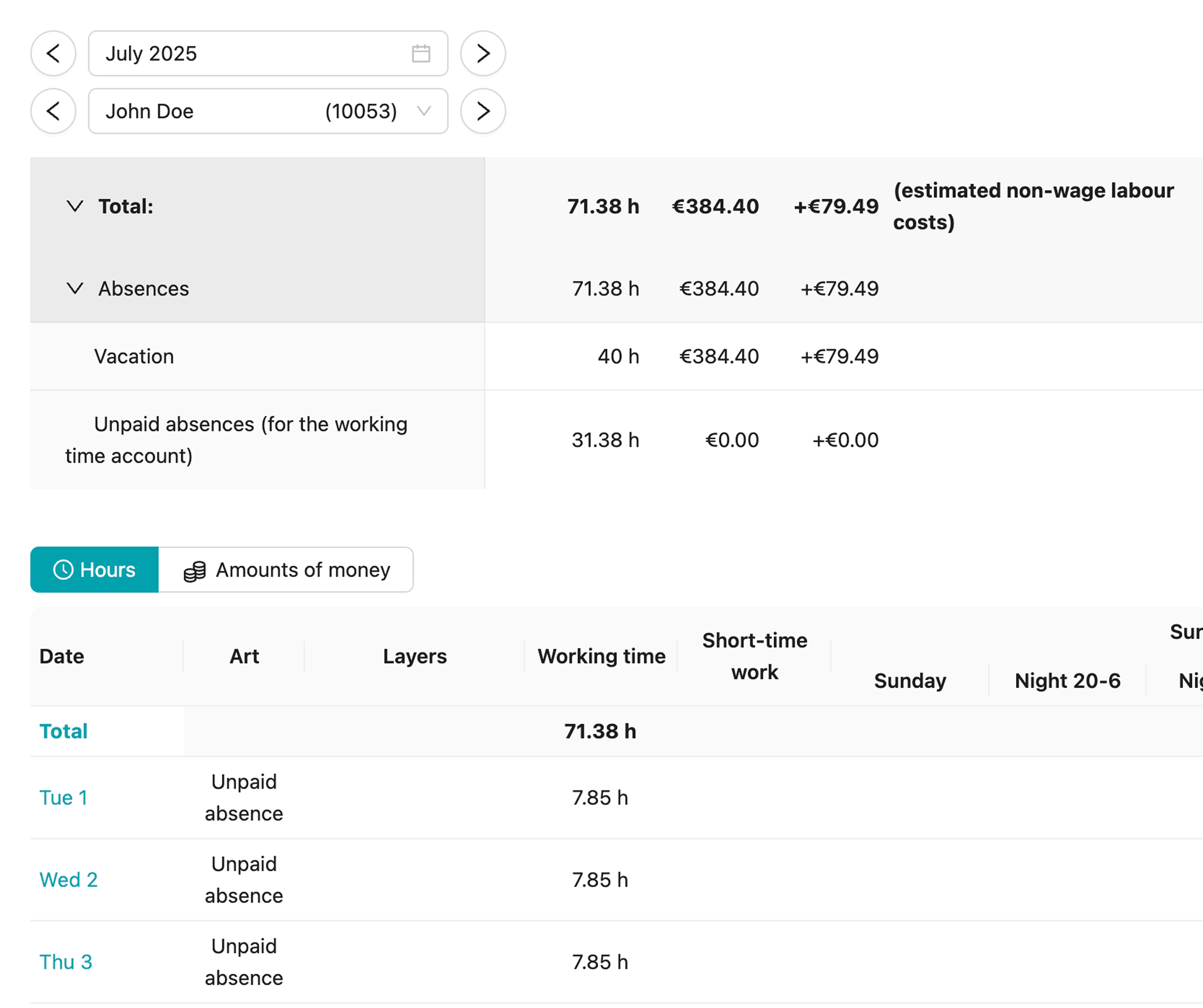working time account
The working time account is used to record and manage an employee’s working hours and is automatically updated on the first day of each month. It enables flexible working time arrangements by allowing overtime or deficit hours to be accumulated. The employee can balance these hours as needed, leading to more flexible scheduling. The working time account serves both to comply with legal regulations and to consider individual needs and operational requirements.

This symbol allows overtime or deficit hours to be transferred into the working time account.

This symbol allows a time off in lieu to be created.
The number of hours to be compensated on a time off in lieu day must be pre-set in the contract data.

Why are unpaid absences taken into account in the working time account?
When employees are absent without pay, this is reflected in the working time account. At first glance, this may seem incorrect, but it is necessary for calculating the correct total hours.
Unpaid absences are not recorded in the monthly hours but are still included in the working time account. This prevents employees from being doubly disadvantaged—first by the hours not worked and second by additional deficit hours in the month. To avoid this double penalty, Nesto credits unpaid absences as average daily target hours in the working time account.
An example to illustrate:
An employee takes an entire month of unpaid vacation. Their monthly target working time is 169 hours. At the end of the month, one would expect their working time account to show 0 hours. If the hours were not calculated, the employee would have -169 hours in the working time account at month’s end because they did not work a single day. This would mean a double penalty: once for the absence and once for the deficit hours. To prevent this, the average target working hours are credited daily as “plus hours” to the working time account.
The working time account results from the difference between the monthly target working time and the actual hours worked. Without calculating unpaid absences, the employee would end up with -169 hours instead of the expected 0 hours.
In the employee details, this is displayed as follows:

For unpaid absences, not the hours for absence compensation are used, but the average target working time. This ensures that the employee is neither disadvantaged nor favored by their absence.
